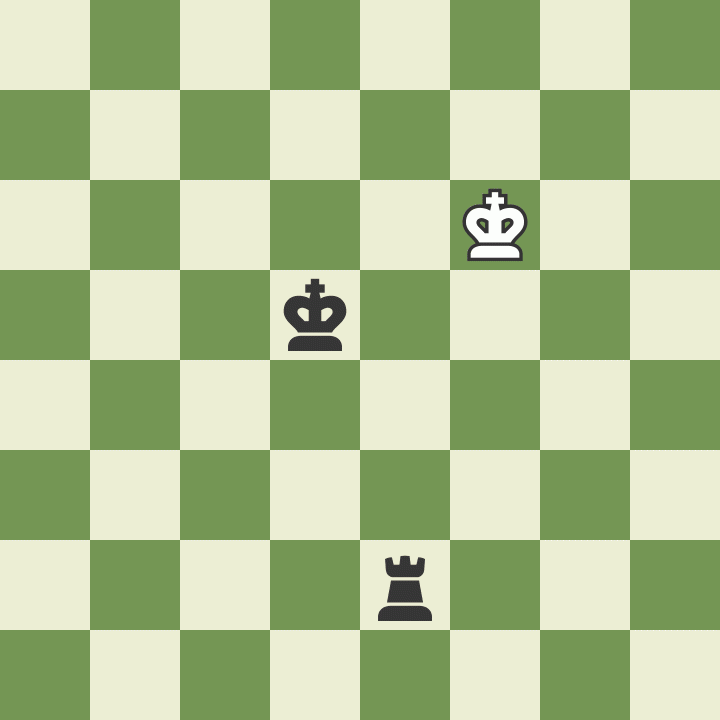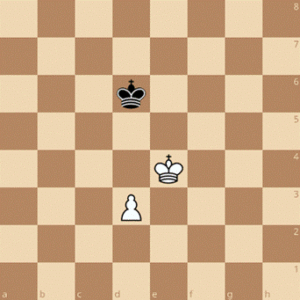You are in a winning position. You just have a few pieces left. But you don’t know how to checkmate in the position. Or you are low in time. Eventually you either draw the game by perpetual checks, 50 move rule, or might even lose it. Sounds relatable, right? The phase we are talking about is called the Endgame in chess. It is the last phase of the game and involves only a few pieces on the board. Endgames are crucial to win matches, especially at the beginner level.
There are some theoretical endgames in which you can win in a winning position – or sometimes can draw in a lost seeming position with the best play. And I think that every beginner should start with rook endgames. This type of endgame appears frequently in the game. The main reason is the late development of rooks. You will notice that in your own games – you might have traded all the minor pieces and queen by the time you develop your rooks.
I started with learning the most basic rook endgame – which is what this article is all about – checkmating with a king and a rook. It helped me win many games at the beginning and boost my confidence as well. I was so impressed with myself that I tried to bring every game into a simple king vs king and rook position so that I can apply what I learned and win one more game with my knowledge. Let’s dive in to enrich your knowledge on endgames.
Checkmate with a King and a Rook
Let’s start by looking at what a checkmate with a king and a rook looks like.

The rook moved to a8 to a7 to deliver a checkmate. The white king does not have any square to escape this check. The front three squares – d7, e7, and f7 – are blocked by the attacking king. This what a check with a rook and a king looks like.
How Do You Bring This Position
To make this simple checkmate to happen, you must bring the defending king to one of the four edges of the board – i.e. to the a file, h file, 1st rank, or 8th rank. This is your first step.

Cutting off the King
Let’s take the above example. How would you take the white king to one of the edges of the board? To do that, you must choose an edge where you want to force the enemy king to. I’ll opt for the h file in this case – as it is the closest to the enemy king.
You are done with the primary step. Now your job is to actually bring the enemy king to the h file. You have to make sure that the white king does not escape through the f file. Moving the rook to e4 cuts off the white king from the f file.

Now the king cannot move to either square of f file. It has to stay on the current file or go further close to the edge of the board.
The Knight Distance
The defending king goes to f7 – i.e. stays on the same file. For this kind of instance, the attacking king must maintain a knight distance with the defending king. Black king moves to e6 in this example.

Notice that the black king is exactly a knight distance away from the white king. Notice that the black king is exactly a knight’s distance away from the white king. The black king must maintain this distance until it is time to take the opposition.
Take Opposition
After cutting off the enemy king, the next thing you should do is to take opposition. Opposition is nothing but staring at your opponent’s king with your own king. In this case, white king moves to f7. Black plays d6 – maintaining the knight distance. White king to f8, black king to d7, and finally white plays king to f7 – trying to stay on the same file. Now we have reached a position called the opposition.

Both the kings are now right opposite to each other. The white king has been blocked from moving opposite to the edge of the board. The current position is similar to the very first figure of this article. And it’s the perfect time to give a check by moving the rook to f2.

White king now has no squares to go forward. It has to travel towards the edge of the board now – as we planned. As soon as the white king enters the g file, we immediately take the opposition again.

NOTE: When the attacking king is a knight’s distance away from the defending king and it’s the attackers move to play, the attacker should play a waiting move with his rook. A waiting move does not significantly change one’s position. It does only what the name suggests – that is to wait for the opponent to make a move which will weaken their position.

We continue the process until we can take the opposition when the defending king is on the edge of the board as we planned. Once we take that opposition, we will just simply give a check to deliver a checkmate.

Summary
The whole process might seem a little confusing at the beginning. But trust me, it is way easier than you think. I’ll serve you with a summary of the whole process once more.
- Choose one of four edges of the board
- Cutoff the enemy king and start bringing him to the edge
- Take opposition
- Simply give a check with the rook
- Continue the process until you deliver checkmate
Try to apply what you learned today and boost your confidence.



